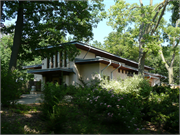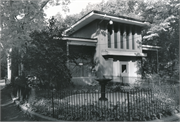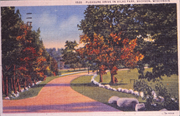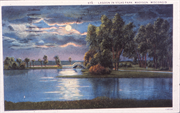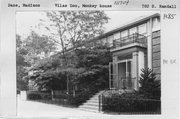| Additional Information: | A 'site file' exists for this property. It contains additional information such as correspondence, newspaper clippings, or historical information. It is a public record and may be viewed in person at the Wisconsin Historical Society, State Historic Preservation Office.
Map Code 0709-271-0099-4.
For photographs of individual buildings, see extension cards.
Henry Vilas Park, today one of Madison’s most popular places to picnic and play, began, like many of the city’s other parks, as a swamp. At one time, about five-eighths of its land rested a foot below the sloshing waters of shallow Lake Wingra. Then, in 1903, local physician Edward Kremers and Madison congressman H. C. Adams suggested creating a public park along the lake’s north shore. As a developer for the Wingra Park Addition, then a Madison suburb, Adams knew that the park would enhance his real-estate venture. John Olin, president of the Madison Park and Pleasure Drive Association, embraced the idea and turned to millionaire William Vilas for help. Vilas, a lumberman, former U.S. senator, and former Secretary of the Interior (President Grover Cleveland), agreed to purchase the land if the association raised the funds necessary to straighten and dredge Wingra Creek and make other improvements. Vilas also asked that the park be named for his late son, Henry.
To develop the landscape plan, the association engaged the services of Chicago landscape architect O. C. Simonds, who had recently completed the design for Tenney Park. The Simonds design converted almost forty acres of bog into park land by dredging fill from the adjacent lake. Curvilinear paths wound around a four-acre lagoon, a picnic grove, a playground, and a meadow bordering Lake Wingra, all artfully landscaped with shade trees. On Sunday afternoons, crowds of music-lovers enjoyed band concerts.
In the winter of 1910-1911, T. C. Richmond donated a herd of five deer, and thus was born the idea for the zoo. When it opened in 1911, it housed not only the deer but also small animals common to the area, including groundhogs, woodchucks, rabbits, rats, a raccoon, an eagle, a squirrel, and a red fox.
Four years later, the park association commissioned the construction of a Bird House, which also contained areas for reptiles and fish. It was the first permanent building erected for the zoo. Local architects Claude and Starck designed it along Prairie School lines. The two-story, flat-roofed central core is flanked by one-story, flat-roofed wings. A ribbon of five narrow vertical windows soars the full height of the main block’s second floor, but the wide eaves and the canopy over the entrance cast deep horizontal shadows, anchoring the stuccoed building to earth. Originally a much larger canopy hung down from heavy chains; the present one appears to cantilever from squat piers framing the entrance. Large birdcages in the front recesses of the wings allow for bird-viewing from the outside. The building is being rehabilitated: leaded glass will once again fill the windows, and glassed-in aviaries in the wings will mimic the height and shape of the original cages.
Vilas agreed to purchase the land with conditions that the MPPDA contribute some funds and build a road along the lake shore to St. Clara College (now Edgewood College), dregde Lake Wingra and name the park after his deceased son Henry. |
|---|

